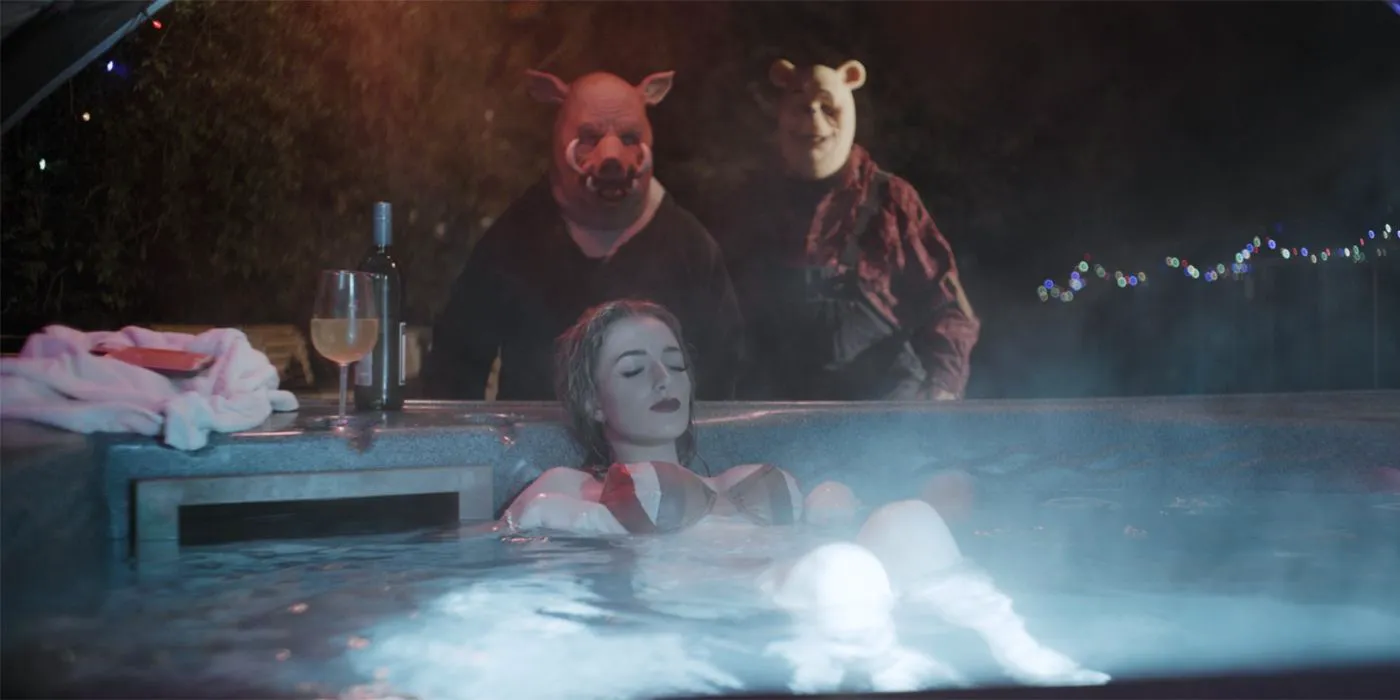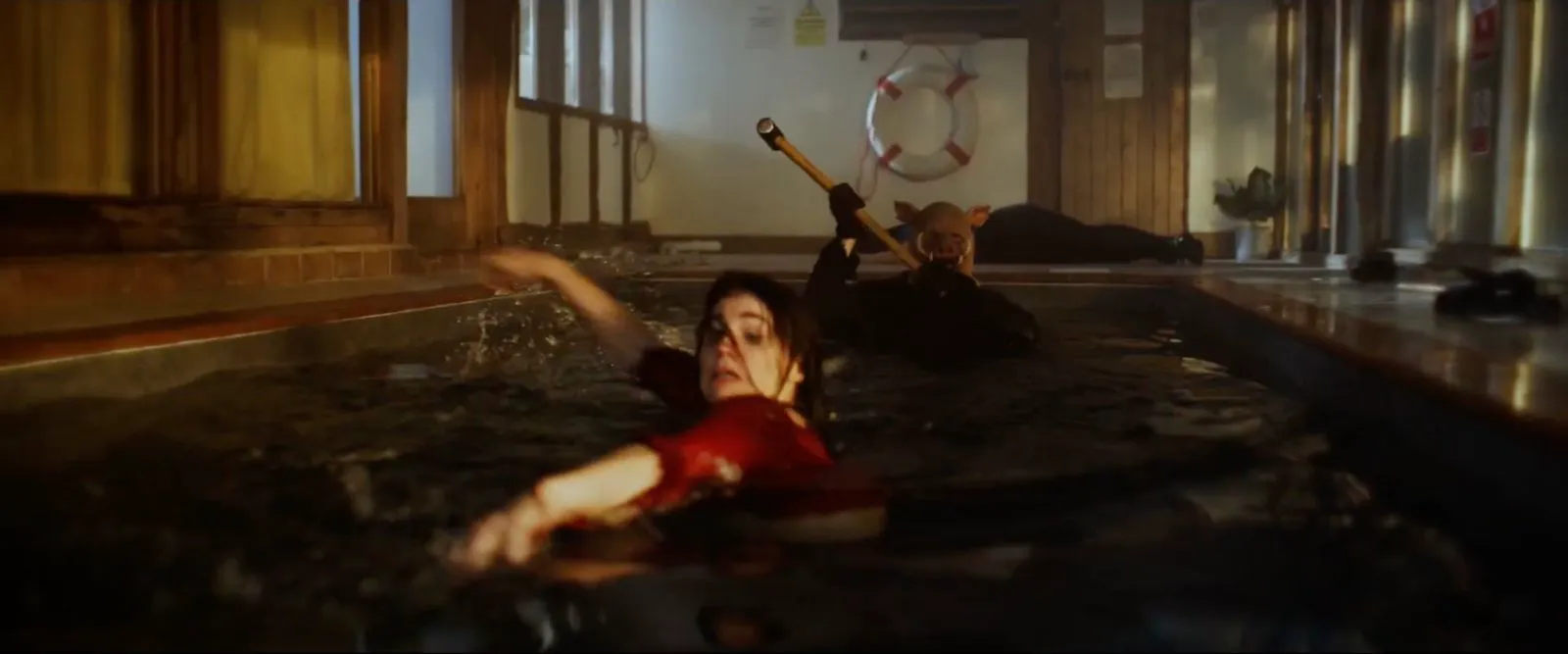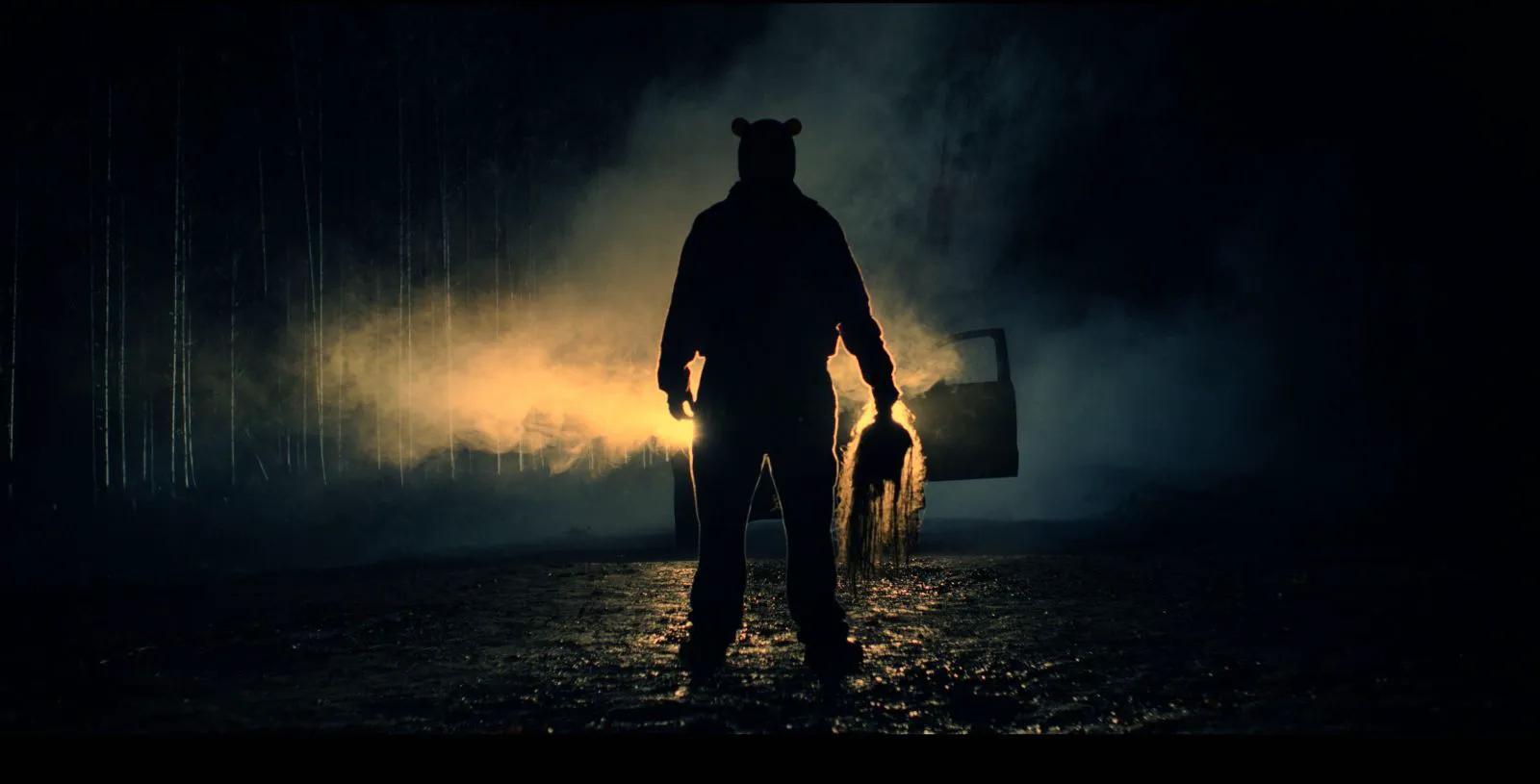A group of girls heads to a cozy country house to relax, swim in the pool, and catch up. This trip is especially important for Maria (Maria Taylor), who needs to recover from PTSD after dealing with a stalker. But their modest party is interrupted by the intrusion of uninvited guests – maniacs in Winnie-the-Pooh and Piglet masks, intent on a bloodbath.

Craig David Dowsett as Winnie in a still from “Winnie-the-Pooh: Blood and Honey”
Today could be considered a day of mourning for childhood. With the expiration of U.S. copyright on these beloved characters, Winnie-the-Pooh and Piglet have fallen into the hands of trash filmmakers and become serial killers. The popularity of the bear and piglet, if you think about it, is comparable to the fame of Michael Myers and Jason Voorhees. Critics, especially those who are parents, have not forgiven the creators for this stunt. “Winnie-the-Pooh: Blood and Honey” has been shamed by the press and called a pure perversion. It wouldn’t be so bad if Rhys Frake-Waterfield’s horror adaptation only bothered fans of the children’s story and the eternal peace of its author, A.A. Milne. However, it also stabs in the back slasher fans who were expecting a decent bloodbath. “Winnie-the-Pooh: Blood and Honey” is pure hooliganism: hastily executed at a well-chosen moment when the public and copyright law are caught off guard. This stunt could have launched a new cycle of character reproduction: from a children’s cult to an adult one, from a magical world where honey flows to a genre one where blood splatters. However, Rhys Frake-Waterfield’s film desperately suffers from a lack of inventiveness. Most likely, in a couple of months, “Winnie-the-Pooh” will be forgotten even as a bad joke.

Craig David Dowsett as Winnie in a still from “Winnie-the-Pooh: Blood and Honey”
The Twisted Premise
The film’s premise, it must be admitted, is remarkably schizophrenic. A guy leads a girl through the woods in search of an old childhood friend, Winnie-the-Pooh (now catching Pokémon doesn’t seem so absurd), but they encounter a not-so-friendly reception. Then everything follows the formula: a group of girls (read: future victims) relaxes in a local house and assesses how the modern Winnie-the-Pooh visits, what gifts he brings, and so on. Scolding the characters for their blatant stupidity is pointless, like complaining about bad weather. But “Winnie-the-Pooh” has more critical flaws: the potential of the characters used is not realized from the opening credits to the finale. In other words, if Frake-Waterfield had other rubber masks in his arsenal, it could have been not the Winnie and Piglet tandem (there didn’t seem to be enough masks, because we never see Tigger and Eeyore), but other characters that fell into the public domain.

Craig David Dowsett as Winnie in a still from “Winnie-the-Pooh: Blood and Honey”
A Missed Opportunity
“Winnie-the-Pooh: Blood and Honey” brazenly grafted the masks of childhood heroes onto a run-of-the-mill slasher and hoped that the trick would bear fruit. But, apart from a slight stir on the Internet, it seems that this pure genre improvisation has yielded no results. Yes, the maniac devours honey and is quite capable of unleashing a swarm of bees on his victim, but these features are hardly integrated into the plot. The reprisals are done without playfulness or creative zeal.
Final Verdict
An hour and a half of clumsy carnage and fake gore with zero tension and intrigue – “Winnie-the-Pooh” revels in its shamelessness, occasionally playing on childhood emotions. Psychology, not a strong point of genre cinema, is reduced to cardboard-folksy pictures here. One guy simply can’t let go of his childhood and imaginary friend, while others – those with knives and sledgehammers – simply can’t resist bloody fun. The conclusion after watching comes by itself: the figure of Winnie-the-Pooh has become considerably shallow, having forgotten how to behave culturally when visiting. The terms of patents on characters should be tightened (presumptuous fan fiction, in principle, has almost never benefited humanity), and Disney needs to urgently consider how to save its heroes from another film profanation. Who knows how many teenagers will die at the hands of Peter Pan or under the hooves of Bambi?